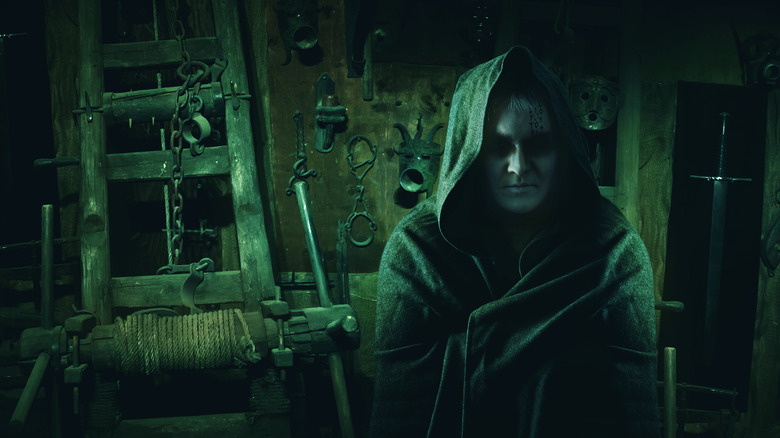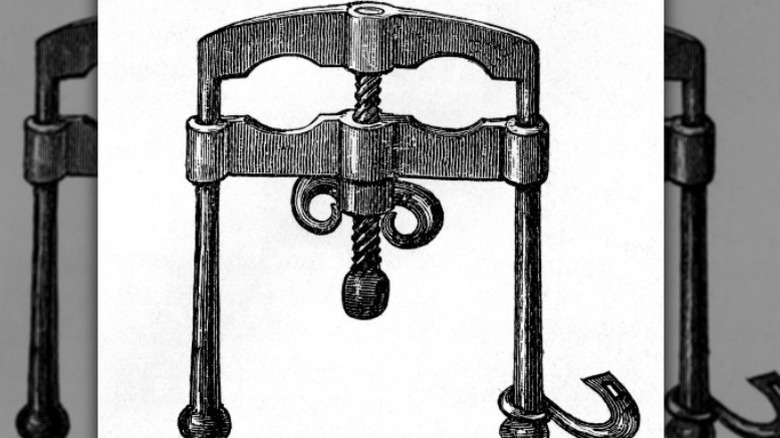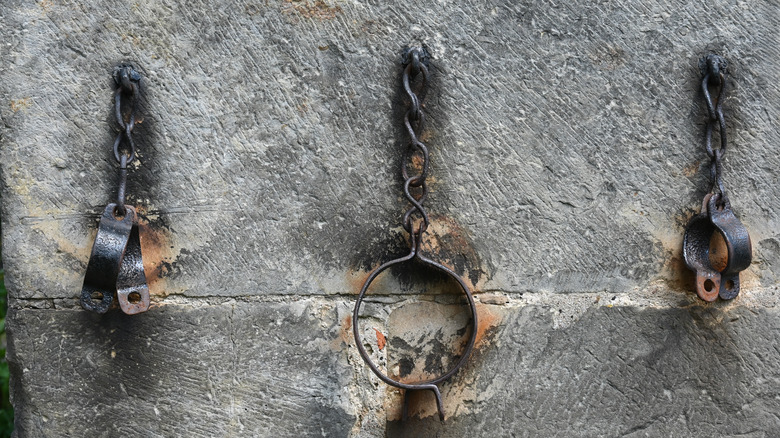Thumbscrew Torture Is Actually Worse Than It Sounds
No doubt, mankind is an exceptionally ambitious, imaginative, and innovative species amongst his earthly peers. As human beings, we pride ourselves on our conscience ability to think outside the box. We can create things and behave in ways that other beings around us cannot, but that's not always such a good thing — take a look at some of the more bloodstained pages in our history books.
For instance, one can't help but wonder who in their right mind could have possibly conceived some of the ideas for certain torture devices that were commonly used in centuries past. Even worse, scenes of gruesome torture and execution were often made public, according to Sky History. British Historian James Anthony Froude once said, "Wild animals never kill for sport. Man is the only one to whom the torture and death of his fellow creatures is amusing" (via Brainy Quote).
Whether for amusement, punishment, or interrogation, the human race has employed vicious and incomprehensible methods of torturous savagery toward one another for generations. While the vast majority of those diabolical mechanisms were designed to eventually deliver death unto the victim, one of the most brutal and inhuman of them all deliberately refrained from doing so. "Thumbscrew torture" might not sound quite as intimidating as the Heretic's Fork or the Brazen Bull, but it was a horrendous fate to endure nonetheless, and it held no promise of death's merciful release by the time it was all over with (per Medieval Chronicles).
What was thumbscrew torture?
The thumbscrew was a device designed to elicit extreme pain without actually doing much damage to the victim — at least not any serious damage that might pose a threat to one's life. It was a small contraption that the accused would be made to put his or her thumbs into. With the turning of a few screws, the apparatus would start to close shut, crushing the victim's thumbs or fingers into shards of bone and torn flesh in the process. Some say it originated in 1500s Russia and was used to punish dissidents of the army, but there are multiple theories as to who initially conceived the practice of thumbscrew torture, as History Daily reports.
While one of the perks — insofar as you can factor "perks" into the brutal phenomenon of torture — of thumbscrews was that you surely wouldn't perish as a result of them, it also happened to be something of a downside as well (that makes for a rather ironic "twist" of circumstances, no?). Because there was virtually no threshold that the tortured could reach before they died and the pain ended entirely, thumbscrewing would often last for hours without any relief or eventual cessation of pain, and the agony it invoked was unimaginable for most (via Medieval Chronicles). Think about the last time you jammed your finger in a wall or accidentally slammed it in a door. Get the idea?
Who were the most common victims of thumbscrew torture?
According to Horrible Punishments in History, thumbscrew torture was employed to extract confessions from individuals in Medieval Europe who had been arrested for various crimes. Whether it was a case of petit theft or something far more serious, victims literally had the screws put to them by authorities who sought an admission of guilt or information leading to higher crimes. Sometimes, in order to intensify the effects of the process, sharp spikes were molded to the inner surfaces that closed down upon the person's fingers, making for a far more agonizing and unbearable experience.
Torture became exceptionally popular throughout the Spanish Inquisition when clergy members painstakingly sought confessions from those they deemed heretics and blasphemers. The accused were often starved, burned, and racked, but the thumbscrew method was ever-present throughout.
Sometimes, torturers even combined methods in order to exponentially compound applied pain and thus increase the likelihood of a confession. If an individual "confessed" to being a heretic and resolved to abandon his or her own beliefs in favor of the Christian paradigm, they were often spared. If not, their torture intensified and they were ultimately put to death. On the other side of the world, the practice of thumbscrew torture would arise during the Salem Witch Trials as well. Other renditions of the thumbscrew method sough to incorporate different body parts into the grueling process, including the knees, legs, arms, and head (per Horrible Punishments in History).


